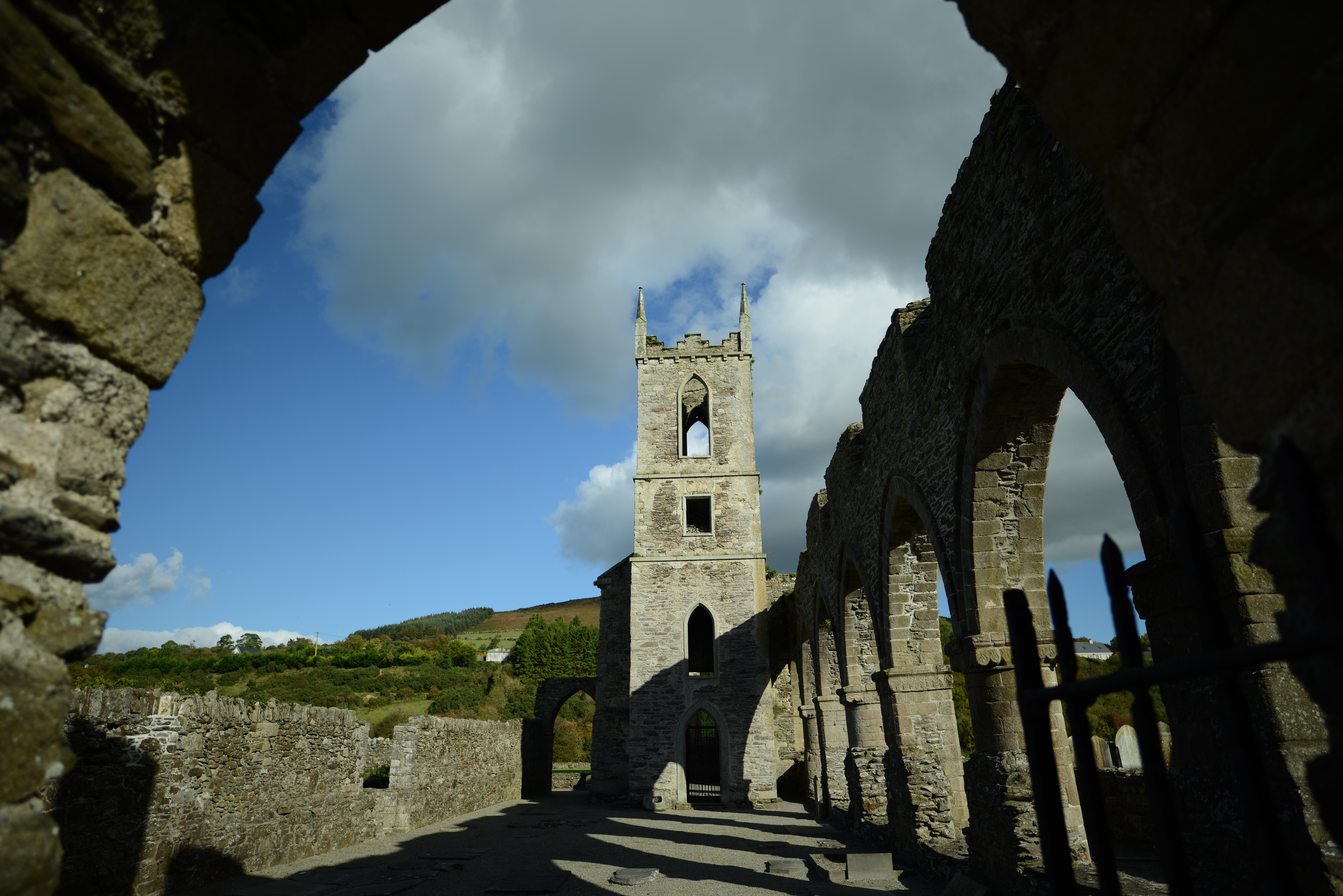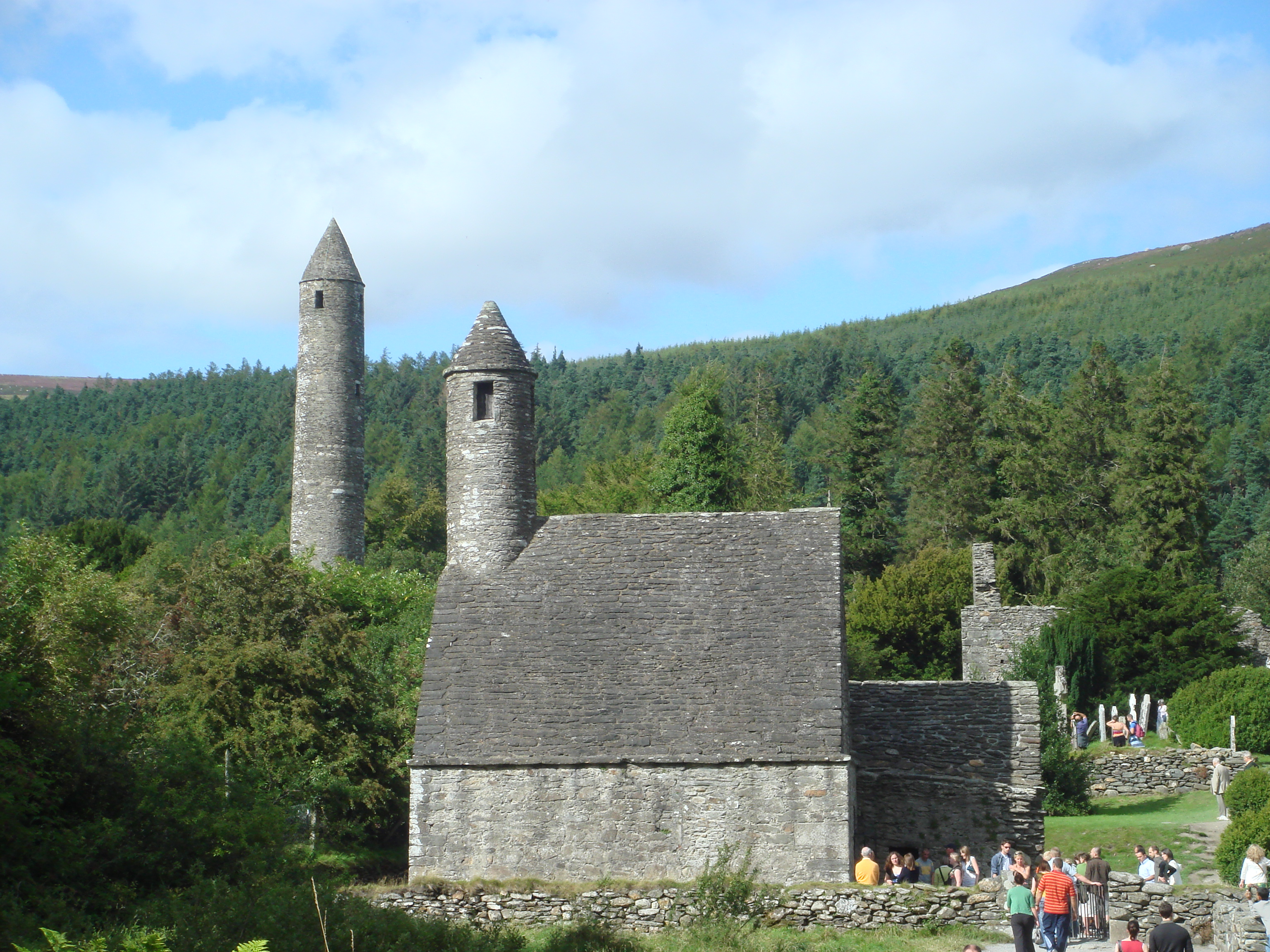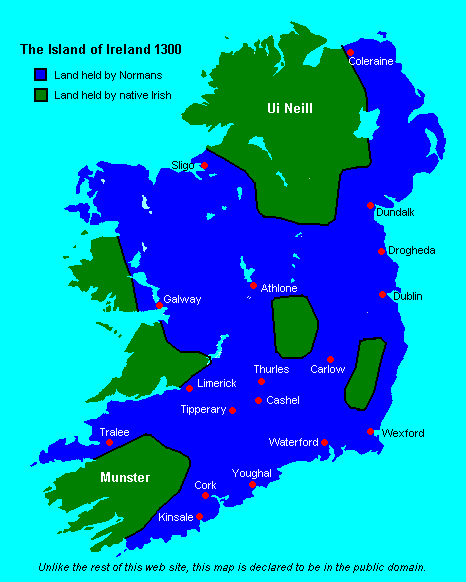|
Baltinglass
Baltinglass, historically known as Baltinglas (), is a town in south-west County Wicklow, Ireland. It is located on the River Slaney near the border with County Carlow and County Kildare, on the N81 road. Etymology The town's Irish name, ''Bealach Conglais'' means "the way of Conglas". It was the name of a palace at Baltinglass, where, according to the Irish etymologist Patrick Weston Joyce, the powerful Leinster king Branduff resided in the sixth century. Conglas was a member of the mythological warrior collective, the Fianna. A nineteenth-century explanation is found in Samuel Lewis' A Topographical Dictionary of Ireland, where he says that the name, "according to most antiquaries," comes from ''Baal-Tin-Glas'', meaning the "pure fire of Baal," and that this suggests that the area was a centre for "druidical worship". The detailed study, ''The Place-names of County Wicklow'' by Liam Price provides several variations of the town name from the 12th century Book of Leins ... [...More Info...] [...Related Items...] OR: [Wikipedia] [Google] [Baidu] |
Baltinglass Abbey
Baltinglass Abbey () is a ruined medieval Cistercian abbey in Baltinglass, County Wicklow, Ireland. Founded by Diarmait Mac Murchada in 1148, the abbey was suppressed in 1536. It is today a National Monument. History Founded in 1148 by Diarmait Mac Murchada, the King of Leinster, Baltinglass Abbey sits beside the River Slaney in a valley of the Wicklow Mountains. The original name ''Belach Conglais'' means "pass of Cú Glas," referring to a mythological hero that was killed by wild boars. The abbey is roughly contemporary with Ferns Abbey, St Saviour's Priory, and possibly also Killeshin Church. Baltinglass Abbey was established as a daughter house of Mellifont Abbey, a Cistercian abbey near Drogheda. Diarmait gave it the Latin name ''Vallis Salutis'', meaning "Valley of Salvation", and granted it eight parcels of land in the region as an endowment. The first stage of the building was completed by 1170, it became the mother house of Jerpoint Abbey in 1180 and in 1228 it ... [...More Info...] [...Related Items...] OR: [Wikipedia] [Google] [Baidu] |
Viscount Baltinglass
Viscount Baltinglass, in the County of Wicklow, was a title created three times in the Peerage of Ireland. The first came on 29 June 1541 in favour of Thomas Eustace, 1st Baron Kilcullen. He had already been created Baron Kilcullen, in the County of Kildare, in September 1535, also in the Peerage of Ireland. Lord Baltinglass was the nephew and heir of Rowland FitzEustace, 1st Baron Portlester, who died without legitimate male issue. His grandson, the third Viscount, took part in the Desmond Rebellion of 1581 and was attainted in 1585 with his titles forfeited. He died the same year. His younger brothers both Edmund and William both subsequently styled themselves Viscount Baltinglass although the titles were never restored. The second creation came on 27 June 1627 in favour of Sir Thomas Roper. He was made Baron of Bantry, in the County of Cork, at the same time, also in the Peerage of Ireland. Two of his sons, Thomas, the second Viscount, and Cary, the third Viscount, both succ ... [...More Info...] [...Related Items...] OR: [Wikipedia] [Google] [Baidu] |
Rathcoran
Rathcoran is a passage grave and hillfort and National Monument located atop Baltinglass Hill, County Wicklow, Ireland. Location Rathcoran is located atop Baltinglass Hill, east-northeast of Baltinglass, overlooking the River Slaney. History The passage grave is thought to be contemporaneous with Newgrange, i.e. it was built 3500–3000 BC, during the Neolithic. The site was excavated in 1934–36 by P. T. Walshe, revealing evidence of the cremations of at least 3 adults and a child. Fragments of quartz unearthed during the excavation suggest that it was used for decoration. Carbonised hazelnuts, wheat grains and a saddle quern point to the extent of local climate change: in Neolithic Ireland, the climate was drier and warmer, County Wicklow's glens were densely wooded, and farmers could grow crops at altitudes above . Five hillforts surround Baltinglass. Rathcoran, atop Baltinglass Hill is dated to 1000 BC or slightly earlier: during the Bronze Age. The name is f ... [...More Info...] [...Related Items...] OR: [Wikipedia] [Google] [Baidu] |
Baltinglass Hill
Rathcoran is a passage grave and hillfort and National Monument located atop Baltinglass Hill, County Wicklow, Ireland. Location Rathcoran is located atop Baltinglass Hill, east-northeast of Baltinglass, overlooking the River Slaney. History The passage grave is thought to be contemporaneous with Newgrange, i.e. it was built 3500–3000 BC, during the Neolithic. The site was excavated in 1934–36 by P. T. Walshe, revealing evidence of the cremations of at least 3 adults and a child. Fragments of quartz unearthed during the excavation suggest that it was used for decoration. Carbonised hazelnuts, wheat grains and a saddle quern point to the extent of local climate change: in Neolithic Ireland, the climate was drier and warmer, County Wicklow's glens were densely wooded, and farmers could grow crops at altitudes above . Five hillforts surround Baltinglass. Rathcoran, atop Baltinglass Hill is dated to 1000 BC or slightly earlier: during the Bronze Age. The name is from the ... [...More Info...] [...Related Items...] OR: [Wikipedia] [Google] [Baidu] |
County Wicklow
County Wicklow ( ; ga, Contae Chill Mhantáin ) is a county in Ireland. The last of the traditional 32 counties, having been formed as late as 1606, it is part of the Eastern and Midland Region and the province of Leinster. It is bordered by the Irish Sea to the east and the counties of Wexford to the south, Carlow to the southwest, Kildare to the west, and South Dublin and Dún Laoghaire–Rathdown to the north. Wicklow is named after its county town of Wicklow, which derives from the name ( Old Norse for "Vikings' Meadow"). Wicklow County Council is the local authority for the county, which had a population of 155,258 at the 2022 census. Colloquially known as the "Garden of Ireland" for its scenerywhich includes extensive woodlands, nature trails, beaches, and ancient ruins while allowing for a multitude of walking, hiking, and climbing optionsit is the 17th largest of Ireland's 32 counties by area and the 15th largest by population. It is also the fourth largest ... [...More Info...] [...Related Items...] OR: [Wikipedia] [Google] [Baidu] |
County Carlow
County Carlow ( ; ga, Contae Cheatharlach) is a Counties of Ireland, county located in the South-East Region, Ireland, South-East Region of Ireland, within the Provinces of Ireland, province of Leinster. Carlow is the List of Irish counties by area, second smallest and the List of Irish counties by population, third least populous of Ireland's 32 traditional counties. Carlow County Council is the governing Local government in the Republic of Ireland, local authority. The county is named after the town of Carlow, which lies on the River Barrow and is both the county town and largest settlement, with over 40% of the county's population. Much of the remainder of the population also reside within the Barrow valley, in towns such as Leighlinbridge, Bagenalstown, Graiguenamanagh, Tinnahinch, Borris, County Carlow, Borris and St. Mullins, St Mullins. Carlow shares a border with County Kildare, Kildare and County Laois, Laois to the north, County Kilkenny, Kilkenny to the west, County ... [...More Info...] [...Related Items...] OR: [Wikipedia] [Google] [Baidu] |
N81 Road
The N81 road is a national secondary road in Ireland, from the M50 motorway to Tullow, County Carlow, north to south. The N81 continues past Tullow for another 8 km to terminate at the village of Closh, County Carlow, where it intersects the N80. The N81 is longroute map. The road is a dual carriageway between M50 motorway and west of Tallaght, known as the Tallaght Bypass or Blessington Road. It intersects with the M50 motorway at Junction 11. There are plans to extend the dual carriageway by to the urban boundary. The N81 is the only major national road emanating from Dublin that is a national secondary rather than national primary road. The official definition of the N81 from the ''Roads Act, 1993 (Declaration of National Roads) Order, 2012'' Statutory I ... [...More Info...] [...Related Items...] OR: [Wikipedia] [Google] [Baidu] |
Hiberno-Norman
From the 12th century onwards, a group of Normans invaded and settled in Gaelic Ireland. These settlers later became known as Norman Irish or Hiberno-Normans. They originated mainly among Cambro-Norman families in Wales and Anglo-Normans from England, who were loyal to the Kingdom of England, and the English state supported their claims to territory in the various realms then comprising Ireland. During the High Middle Ages and Late Middle Ages the Hiberno-Normans constituted a feudal aristocracy and merchant oligarchy, known as the Lordship of Ireland. In Ireland, the Normans were also closely associated with the Gregorian Reform of the Catholic Church in Ireland. Over time the descendants of the 12th-century Norman settlers spread throughout Ireland and around the world, as part of the Irish diaspora; they ceased, in most cases, to identify as Norman, Cambro-Norman or Anglo-Norman. The dominance of the Norman Irish declined during the 16th century, after a new English Pro ... [...More Info...] [...Related Items...] OR: [Wikipedia] [Google] [Baidu] |
River Slaney
The River Slaney () is a large river in the southeast of Ireland. It rises on Lugnaquilla Mountain in the western Wicklow Mountains and flows west and then south through counties Wicklow, Carlow and Wexford for 117.5 km (73 mi), before entering St George's Channel in the Irish Sea The Irish Sea or , gv, Y Keayn Yernagh, sco, Erse Sie, gd, Muir Èireann , Ulster-Scots: ''Airish Sea'', cy, Môr Iwerddon . is an extensive body of water that separates the islands of Ireland and Great Britain. It is linked to the Ce ... at Wexford town. The estuary of the Slaney is wide and shallow and is known as Wexford Harbour. The catchment area of the River Slaney is 1,762 km2. The long term average flow rate of the River Slaney is 37.4m3/s Towns that the Slaney runs through include Stratford-on-Slaney, Baltinglass, Tullow, Bunclody, Enniscorthy and Wexford. The river is crossed by 32 road bridges and one railway bridge. Wildlife Varied and plentiful wildlife ... [...More Info...] [...Related Items...] OR: [Wikipedia] [Google] [Baidu] |
Passage Grave
A passage grave or passage tomb consists of one or more burial chambers covered in earth or with stone, and having a narrow access passage made of large stones. These structures usually date from the Neolithic Age, and are found largely in Western Europe. When covered in earth, a passage grave is a type of burial mound which are found in various forms all over the world. When a passage grave is covered in stone, it is a type of cairn. Construction and design The building of passage graves was normally carried out with megaliths along with smaller stones. The earliest passage tombs seem to take the form of small dolmens, although not all dolmens are passage graves. The passage itself, in a number of notable instances, is aligned in such a way that the sun shines through the passage, into the chamber, at a significant point in the year, often at sunrise on the winter solstice or at sunset on the equinox. Many later passage tombs were constructed at the tops of hills or mountains, i ... [...More Info...] [...Related Items...] OR: [Wikipedia] [Google] [Baidu] |
Down Survey
The Down Survey was a cadastral survey of Ireland, carried out by English scientist, William Petty, in 1655 and 1656. The survey was apparently called the "Down Survey" by Petty, either because the results were set down in maps or because the surveyors made use of Gunther's chain, which had to be "laid down" with every measure. Background In August 1649, the New Model Army, led by Oliver Cromwell, went to Ireland to re-occupy the country following the Irish Rebellion of 1641. This Cromwellian conquest was largely complete by 1652. This army was raised and supported by money advanced by private individuals, subscribed on the security of 2,500,000 acres (10,000 km2) of Irish land to be confiscated at the close of the rebellion. This approach had been provided for by the 1642 Adventurers Act of the Long Parliament, which said that the Parliament's creditors could reclaim their debts by receiving confiscated land in Ireland. The Act for the Settlement of Ireland 1652 pr ... [...More Info...] [...Related Items...] OR: [Wikipedia] [Google] [Baidu] |
List Of Sovereign States
The following is a list providing an overview of sovereign states around the world with information on their status and recognition of their sovereignty. The 206 listed states can be divided into three categories based on membership within the United Nations System: 193 member states of the United Nations, UN member states, 2 United Nations General Assembly observers#Present non-member observers, UN General Assembly non-member observer states, and 11 other states. The ''sovereignty dispute'' column indicates states having undisputed sovereignty (188 states, of which there are 187 UN member states and 1 UN General Assembly non-member observer state), states having disputed sovereignty (16 states, of which there are 6 UN member states, 1 UN General Assembly non-member observer state, and 9 de facto states), and states having a political status of the Cook Islands and Niue, special political status (2 states, both in associated state, free association with New Zealand). Compi ... [...More Info...] [...Related Items...] OR: [Wikipedia] [Google] [Baidu] |






